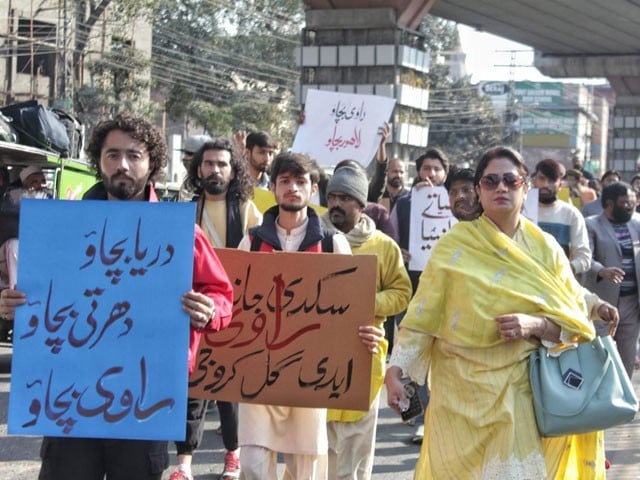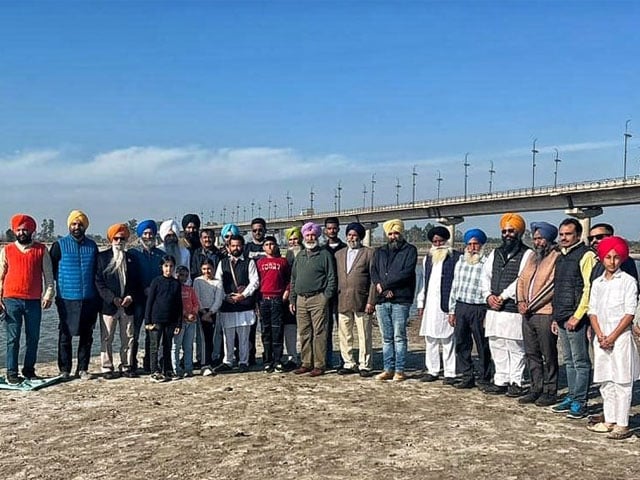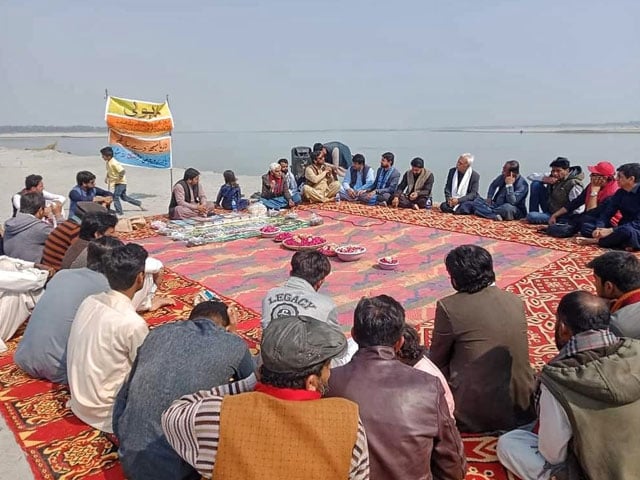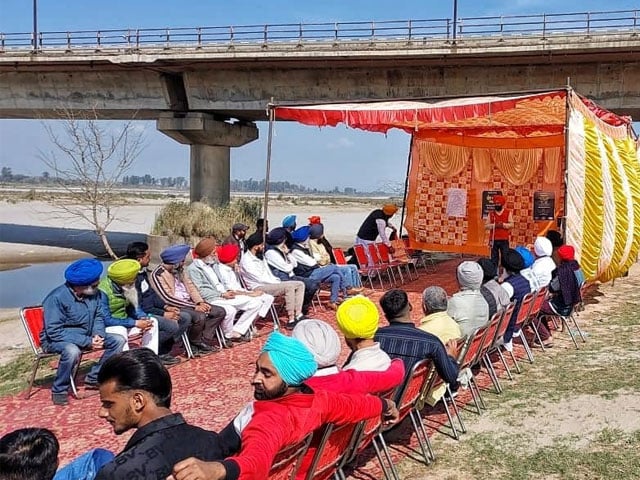
Photo: Express
Lahore: As part of Ravi Bachao Movement, a walk was held from Istanbul Chowk to Ravi River, while on the other hand, in Indian Punjab, Global Punjabi Sangat held a similar unique protest along the banks of Sutlej River.
As part of the Ravi Bachao Movement, a walk was held from Istanbul Square to the Ravi River in which environmentalists, activists, artists and first-time visitors from India also participated.
Environmental activists and civil society called the walk the “Ravi Yatra”, which was also attended by visitors from India for the first time. For the first time in Pakistan, the citizens of Pakistan and India have jointly protested to save Ravi.
On the other hand, in Indian Punjab, the International Punjabi Sangat held a similar unique protest on the banks of the river Sutlej. The aim of this protest taking place in both East and West Punjab at the same time is to give life back to dying rivers.
The participants of the Ravi Yatra said that rivers yearn for their freedom, their inherent right to flow unhindered until they meet the sea.
The spirit of the Ravi Yatra is Abuzar Madhav, a young man from Lahore who started the Ravi Bachao Walk for the first time last year.
The participants of the Ravi Yatra included students, environmentalists, doctors, lawyers and civil society representatives.
Abuzar Madhav says that our rivers are asking for the right to live, our rivers are drying up, aquatic life is suffering, these rivers and the aquatic life connected to them should also get freedom.
The participants of the Ravi Yatra demanded that the rivers be de-polluted, and the discharge of dirty, polluted and sewage water into it should be banned. Another important demand was to ban construction of housing schemes on riverine land.
The most important demand made by the participants of the walk was to terminate the Indus Basin Agreement between Pakistan and India and make a new agreement according to the new needs and conditions.
On this occasion, the participants sat on the banks of the river and sang songs about the flow of the rivers and stories related to them, also threw flowers in the river and planted plants near the river.
(function(d, s, id){
var js, fjs = d.getElementsByTagName(s)[0];
if (d.getElementById(id)) {return;}
js = d.createElement(s); js.id = id;
js.src = “//connect.facebook.net/en_US/sdk.js#xfbml=1&version=v2.3&appId=770767426360150”;
fjs.parentNode.insertBefore(js, fjs);
}(document, ‘script’, ‘facebook-jssdk’));
(function(d, s, id) {
var js, fjs = d.getElementsByTagName(s)[0];
if (d.getElementById(id)) return;
js = d.createElement(s); js.id = id;
js.src = “//connect.facebook.net/en_GB/sdk.js#xfbml=1&version=v2.7”;
fjs.parentNode.insertBefore(js, fjs);
}(document, ‘script’, ‘facebook-jssdk’));





